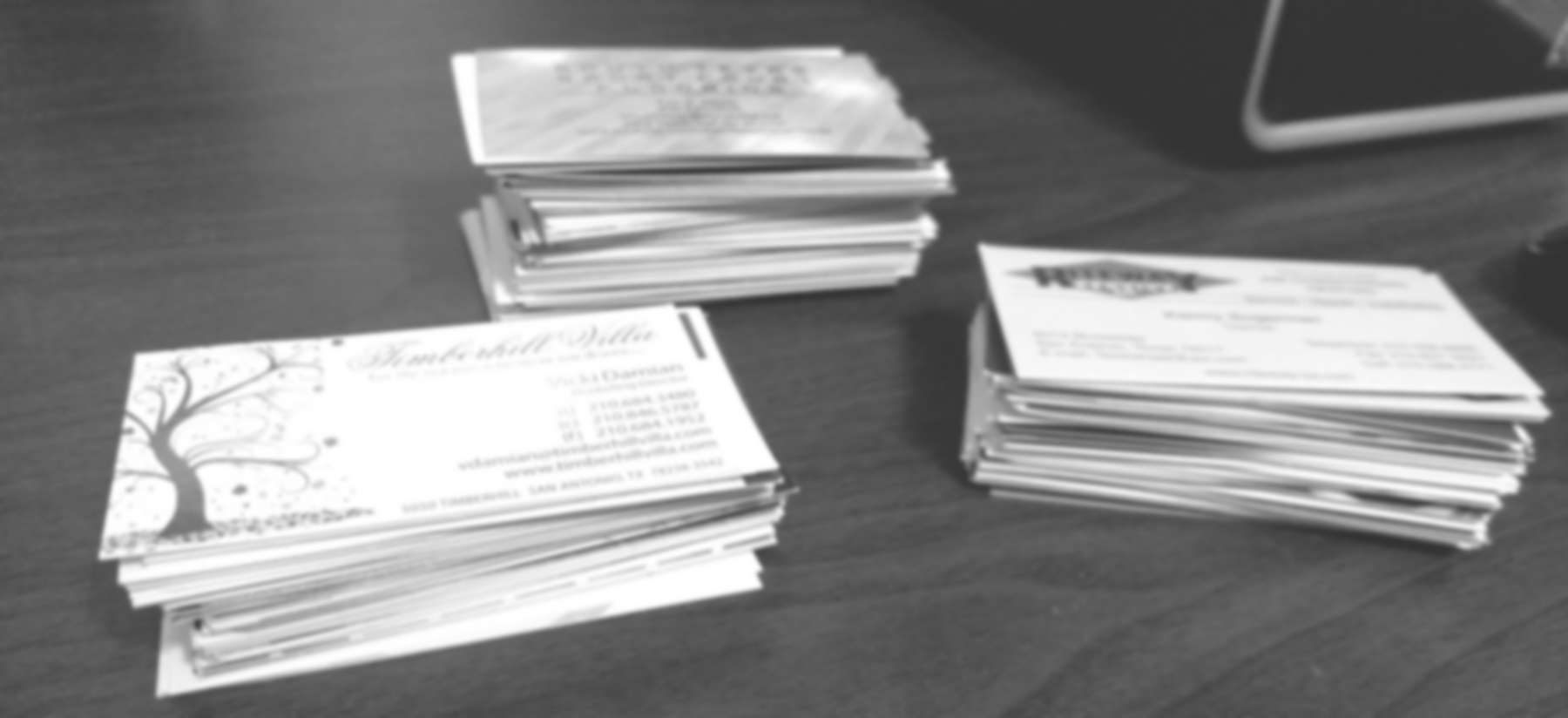“You want your business card to stand out.” At least that’s what you’ve been told. But, in your quest to make it “Stand Out” you may have made it the very first card that gets tossed into the waste basket.
This article provides some pretty obvious, but often overlooked or downright ignored, common sense guidelines to follow when designing your next business card. You’ll also find some design elements that you should absolutely avoid no matter how persuasive or enthusiastic your designer or card printer is when pushing new our unique design options.
Everything in the above list seems pretty logical. But, it’s like those silly warning labels we read on consumer goods. You know those warning labels are only there because somewhere some fool actually tried to swallow a clothes hanger and then sued the dry cleaners. Yes, I have been handed cards which do not contain such items as name, company, email, phone number, etc. If you guessed that these cards went directly into the trash, then you guessed correctly.

In addition to the do’s and don’ts, I also recommend that you have your cards professionally designed, and by “Professionally”, I do not mean by the kid working in the print shop at the office supply store.
Upon handing someone your card, has anyone ever said to you, “Wow, that’s a really nice business card!”? If you’ve never heard these words, then your business card is likely in need of an overhaul.
Your card may be your first impression. A professional designer should know what will make your card stand out and also be familiar with the latest in print processes so that the design can be effectively communicated to the printer.
If you’re buying cards based on the lowest bidder, this is a sure sign that your cards suck. Sorry, it’s just a fact. There is a no such thing as a great business card that only costs $30 for a box of 1,000.
And, on the subject of cheap-o business cards, do not under any circumstances, print your own cards to save money or because you ran out. First of all, it will not save you money. Printing at home will always cost more. Secondly, everyone you know, at some point in their career, has run out of cards. Just tell people that you ran out or that the post office lost your delivery and then offer to text or email them your contact info.
Following the business card design guidelines will ensure that your card makes a great first impression and that it gets saved rather than tossed.


